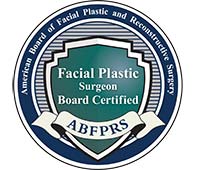Facelifts usually provide great results. However, there are always rare cases where they do not turn out ideally. Why does this happen? Is there a way to prevent it? Dr. David Santos—a facial plastic surgeon with decades of experience—details some of the reasons facelifts fail and how you can prevent bad facelifts.
#1: Over Resection Of Skin
One of the top reasons that facelifts turn out badly is that too much skin is removed. This is rare among qualified and experienced surgeons, but can happen. Over resection of the skin was more common a few decades ago and caused the notorious “windswept” look associated with bad facelifts. The best way to avoid this is to see a qualified surgeon who has performed hundreds of facelifts with results you like.
#2: Pixie Ear
Since facelift incisions are often just in front of the ear, this can lead to the earlobe becoming stretched. Known as “pixie ear”, it is considered one of the dead giveaways of a facelift. Normally, this happens during the stitching of the incision and most of the time is completely avoidable with proper technique. However, sometimes it can pop up during the healing process regardless. Thankfully, it is correctable with a minor, in-office procedure.
#3: Unideal Candidates
Occasionally, patients who are not good candidates for a facelift end up getting them. This can lead to bad results or intense scarring. Additionally, even if a patient is medically fit for the procedure, if they have unrealistic expectations, it may be best to either manage those expectations or refuse the surgery. Dr. Santos screens his patients thoroughly medically, emotionally, and psychologically to ensure they are good candidates.
To learn more and schedule a consultation, call us at 206-430-1035. You can also reach out online via chat, contact form, or Price Simulator.







